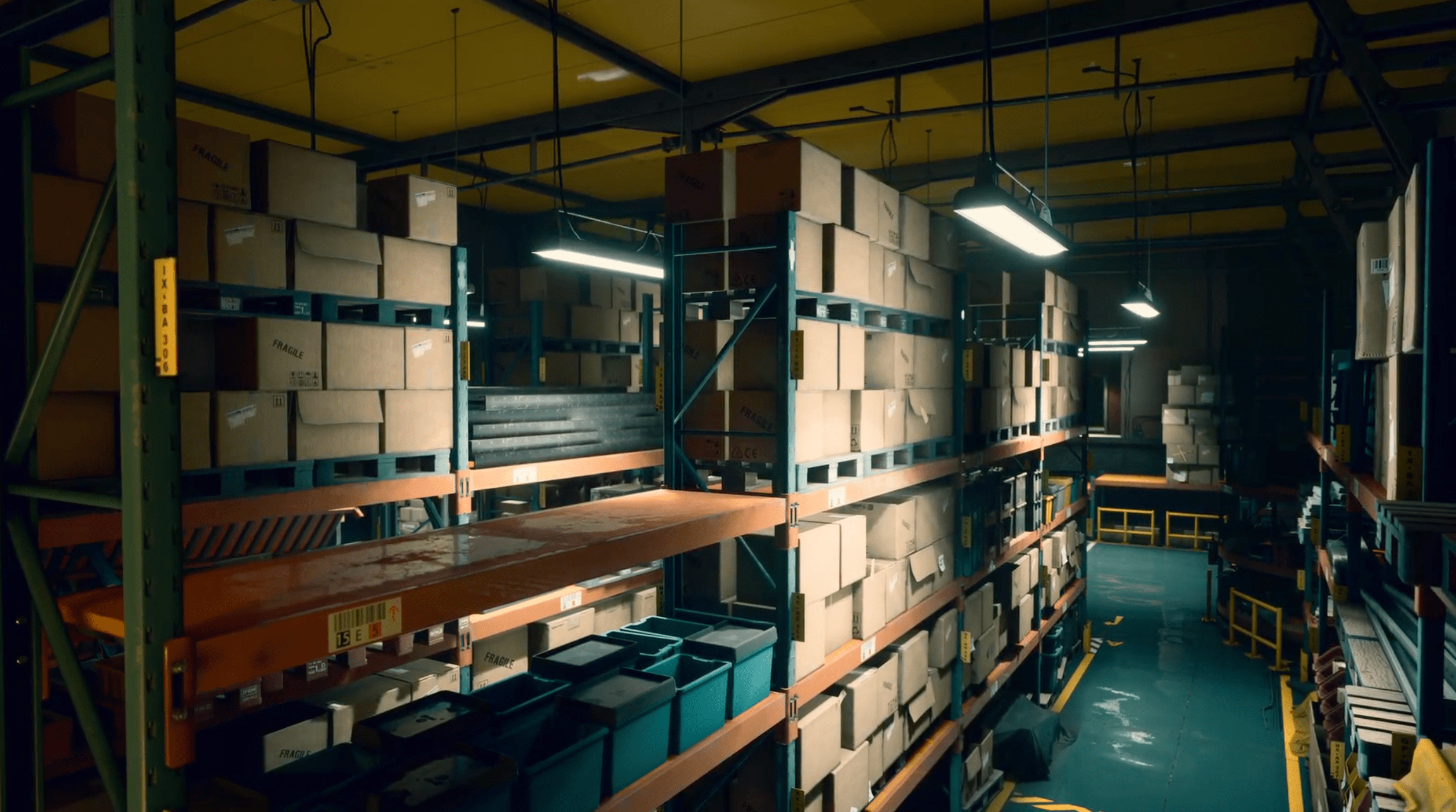Inside the Observable warehouse: seeing is saving
August 14, 2025
The second step on the journey to Adaptive warehouses, after the “Blind” one, is what we call “Observable”. A Blind warehouse is one that operates with limited, manually gathered data, it is reactive - which brings many hidden costs.
In an Observable warehouse, an important layer of visibility is added. We can now see everything that’s happening inside a warehouse thanks to scanning technologies and automated data-gathering systems that eliminate manual processes, thus improving accuracy and responsiveness. More transparency leads to fewer errors, faster decisions and more efficient operations, all of which, in the long term, cut costs associated with inventory, equipment and workflows. Thus, seeing is saving.
In the Blind warehouse, many processes are paper-based, data is fragmented and systems are siloed. The majority of the work to understand what is happening in the warehouse, and deciding what actions to take is done manually from this basis of very limited data. This leaves a lot of room for errors and delayed inefficient decisions, making it very difficult for warehouses to adapt to changes and operate effectively.
One of the important elements that marks the transition to a new type of warehouse is the emergence of technologies like scanners and sensing technologies, which changed the game. For example, scanning barcodes reduce human errors, as “manual processes typically yield 1 error per 300 items counted, compared to just 1 error per 3 million scans with barcode systems” (source).
Similarly, RFID (Radio-Frequency Identification) has the ability to bring further advancements, enabling an increase of inventory accuracy from 63% to 95% (source), a massive jump in inventory management.
Warehouse Management Systems (WMS) emerging in the ‘80s started to get deployed to bring all the new gathered data to a central point of truth, further increasing visibility over stock. These systems opened the door to real-time insights, emphasising the role of accurate, timely data in critical decision making.
Manual, blind processes are being replaced by technologies like autonomous data-gathering robots, capable of roaming and scanning entire aisles in a matter of minutes, with 99% accuracy. These new robots, equipped with sensors, cameras and LiDAR technology, gather data without human intervention, faster and more efficiently than ever.
IoT devices, sensors and cameras are used, in the Observable warehouse, to monitor equipment and optimise maintenance, or worker movements, to increase safety around the warehouse.
In this new type of warehouse, access to more timely, accurate and complete data is enabled. People see and act based on more accurate insights, they can identify and process bottlenecks faster, keeping operations smoother and customers happier.
Data still needs to be interpreted by humans and processes must be assisted and managed personally. But this is an important step in the right direction - warehouses leave the “dark” phase where everything happens reactively, at great costs, and start to be more aware.
Key characteristics of the Observable Warehouse
There is a series of features that characterise this type of warehouse and sets it apart from a Blind one:
- Multiple tracking technologies: There’s a mix of tools present, which ensures automatic data gathering and digital visibility for all activities, at all times.
- Data is collected automatically, but insights are generated manually: Data is obtained through intelligent scanning robots, sensors and scanners, but it is then up to people to analyse, interpret insights, compare metrics, and generate actionable next steps. Decision makers are now aware of what is happening, so can be responsive to the new data available.
- Better responsiveness: As more real-time data becomes available, warehouse teams can react faster. Instead of waiting for the 6 week cycle counting and troubleshooting when it might be too late, staff can act now. But it’s important to mention that it’s still up to humans to access the data, generate the insights and decide when or if to act - so the process is still mostly reactive.
- Less human errors: Manually-performed tasks are naturally prone to error. Technology takes over some of these ensuring, for example, a more accurate inventory. Errors are not entirely reduced though, as new kinds of mistakes - misinterpretation, delayed human reaction - can occur.
An Observable Warehouse is richer in data and deployed technology, but it is characterised more by reactiveness - it can “see” better, but relies on humans to interpret and act on what they see.

Seeing is saving: what costs are optimised in the Observable Warehouse
Capturing data automatically and increasing visibility through technology plays an important role in cutting the hidden costs of the Blind Warehouse. Some of the more important optimisations that are now possible are related to:
- Inventory: Over-stocking, under-stocking, misplaced items - inventory accuracy makes for one of the most important lines of costs in a warehouse. Inefficiencies are expensive, especially in big operations, so the deployment of barcodes, RFID and autonomous scanning robots has been a real game changer. Using advanced scanning technologies in warehouses can end up moving accuracy to 98-99%, and this just in a few days. Stockouts or missed sales-costs are reduced or eliminated in an Observable Warehouse, because people now have access to trustworthy, timely data.
- Errors: Statistics show that human errors “account for about 80% of process deviations in warehousing industries”. Waste is bound to happen in a Blind Warehouse, where items are not properly placed, sales are lost because of stockouts, or money is lost because of inappropriate storage conditions. Catching these errors early, or even preventing them, thanks to a newly introduced tech stack, ObservableWarehouses save good money - globally, businesses end up spending 20% of their budgets to correct human errors in logistics.
- Operational efficiency: Having up-to-date information allows workers and managers to use resources more efficiently and cut costs. For example, order picking - a core operation for warehouses, not only takes time, but it also accounts for “up to 55% of the total warehouse operating costs”. Optimising this highly repetitive process alone by using robots to correctly identify the product and pick it, can have a significant impact over the budget.
- Reporting and analytics: The Observable Warehouse assists humans in analysing the unit’s performance, risks and opportunities through a higher volume of data, clearly organised in a central point of truth. Teams can now look at trends and make adjustments to cut costs in the future - for example, if frequent inventory adjustments for certain SKUs can be foreseen and prevented. As more accurate, fast, up-to-date data becomes available, reporting and analysis becomes easier and more impactful, and costs associated with lack of insights is reduced.
- Sustainability: Logistics is responsible for at least 7% of global greenhouse gas emissions (source). Technology can contribute to more sustainable operations and practices, while cutting on environmental costs. For example, more accurate inventories mean less overstocking, and therefore, less waste. Fewer emergency shipments lead to a smaller carbon footprint and reduced transportation costs. Autonomous systems can be used at any time, even during night time, cutting on energy usage. Lastly, digital tools eliminate the need for paper-based materials, cutting costs and reducing the environmental impact.

Limitations and the road ahead
Implementing these new types of technologies has opened the door to real-time visibility and responsiveness while contributing to cost-cutting. The warehouse is not flying Blind anymore - it turned Observable.
This is a very important milestone along the automation journey. Many old problems get solved in this phase, but some critical challenges remain to be addressed in the next phase of evolution.
Processes are optimised, costs are reduced, but the approach is still more reactive. This might lead to delays or suboptimal decisions. An overload of information, not properly interpreted, will just create noise. There’s a lot of data, but not enough insight, the warehouse gains “eyes” but not a “mind” just yet.
In the next phases - intelligent and adaptive, warehouses use systems that allow them to interpret data and learn and adjust without human intervention at all steps. To learn more about the journey to Adaptive, check out our extensive whitepaper.